Actions speak louder than words
This article reflects on how I believe we can learn from the 'texel-way' of living.
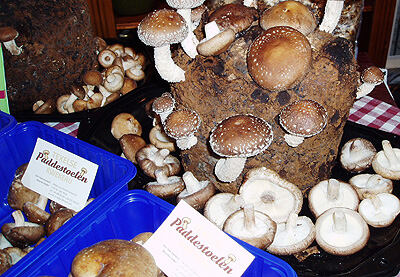
This week our group went Texel; what an inspiring people we met this week! While on the mainland people are talking about propositions for a circular or blue economy, the people on Texel are actually doing it. As TUDelft students we were coming to the island to bring innovative solutions. However, this week we discovered that Texelaars are perfectly capable to do this themselves. But more importantly, they also make it happen. With a clear vision and expertise on Texel as a market, they are inventive on the ‘Texel-way’: doing things with what is available. Without knowing it, they are implementing innovative sustainable strategies, where people on the mainland have gatherings on to explore these strategies. Something we as TUDelft students can learn from in making sustainable transitions happen. Allow me to give some inspiring examples.
For our research we went to the Texelse Paddenstoelen kwekerij were we had an interview with Maarten Dijker. A man, who invented his own way of cultivating shiitake mushrooms with things that are available around him. In a barn with shelving of a flower company, buckets with water from a bakery and waste wood scrap, he is able to cultivate mushrooms on a flexible manner that is adaptable to the changing demand of shiitake mushrooms. Another inspiring example is the company ‘Texelsvilt’, who transformed the wool of the ‘Blauwe Texelaars’ sheeps without any value into valuable interior products. Starting from their own passion they have transformed a local waste product into a cash flow.
When meeting these inspiring people, it was noteworthy that during these conversations the word sustainability was often not mentioned by themselves. Instead they all speak from a passion. As Maarten described; in the end it must be economical feasible so I can live my Texel lifestyle. Their initiative provides a way of living on ‘de Texelse manier’; using everything what is locally available to create a financial efficient lifestyle. In that sense, the sustainable blue economy strategy is in fact incorporated in their culture with smart, sometimes even low-tech, inventions.
I believe that as TUDelft students, we can learn that sustainability does not always asks for high-tech solutions. Sometimes sustainability needs a service or small low-tech solutions. Nature uses what is currently available. We need to open our eyes on what is locally available, just like the Texelaars. Although this might seem like it leads to the most obvious solutions, they are often not. Because of the take-make-dispose economy, we have become blind of what is around us. We are blinded by fancy flashy technology, while in fact they are often based on scarce resources. I was really surprised by the inventiveness of Texelaars and their use of locally resources that are abundantly available. They enhanced my believing in the blue economy. This is the place were the blue economy is actually happening. Why shouldn’t we if it is more sustainable and cost-effective? What is more sustainable than using things that nature already provides?
Inspired by Werner the farmer (aka Angry Werner)
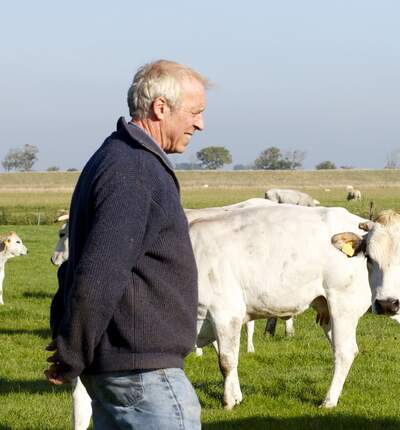
I got inspired by the stubborn Texel farmer with 300 cows and owner of a company on Texel specialised in moving sand, demolish buildings, paving, mowing and transport. You may remember him from his quotes on the Monday evening when we presented the plan to the locals: "Why would you open the dikes? That’s just crazy! The land is owned by farmers and is in their possession for generations! You can't come here and just do that?!" And after giving a monologue of a whole list of things he did not like and that were not possible, Caroline asked the question: but what do you like about the plan? "I like this evening, talking and discussing with the students" Carolyn: "No, what do you like about the plan? ”Eeeh ... I don't know, I don't like something in specific.." Werner replied.
A very straight forward man you can say who is cautious towards new ideas from de overkand (the mainland) and can appear very stubborn and conservative. But is he? He came to our presentation, while I can imagine he has a full schedule with all his companies. Also he stayed a long time discussing with us and was one of the last people who left. After the presentations I had a long chat with him and discovered some things about him: Werner is very sustainable.
He has as the amount of solar panels on his roof that produce as much as energy as he consumes. He just replaced the lighting in the workshop with LED lights. He hate to waste stuff and try to reuse as much as possible. The demolishing company he ownes tries to separate the building waste as good as possible and brings it to a very good recycle company in Amsterdam. He also don’t like building and installation companies that throw away (new) building components that they do not use, just out lazyness . He buys new trucks because they have cleaner engines (you can discuss when it is sustainable when to buy a new cleaner truck but which cost energy to produce it, or to use an old truck that polutes more but has a longer life time and less embodied energy per year).
We make nice plans for Texel to be sustainable, but I don’t have solar panels on my roof to make my house energy neutral. I also try to reuse as much as possible but he also makes his company to do so. I realy like his both feed on the ground attitude and living your beliefs. I like that much much more than all the companies that sell themselves as sustainable and green and only use it for the marketing.
To conclude: I got inspired by a sustainable Texeler.
Let's be green, let's be Grinch!!
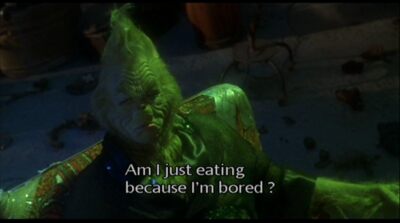
I know that we left Christmas far behind us and that the topic may seem out of the bloom at the beginning, but it is a topic that I wanted so much to write about and is closely related to my experience on Texel. Just before Christmas I watched the movie “The Grinch” and I was extremely inspired from the main character (Grinch) and the lessons for sustainability that he gives.
A bit about the plot,
Grinch is a green furry man that was rejected from the local community of his home town because of his appearance and he started living alone on a mountain nearby. There, is also located the landfill of the area, which he uses to find his food. He eats objects, lamps, old and new gifts that were not appreciated and all kinds of things that people thought of as garbage. So, his lifestyle is based on ‘waste is food’. He also talks about how ungrateful people is to not see all the things they have and throw away stuff that are even as good as new. Eventually, he returns at his home town and he is accepted back. His life style is also accepted and people learn an important lesson from him.
Back to Texel,
Being inspired by Grinch I was touched by two facts here. First, from a local entrepreneur who uses wool from black sheep that normally is wasted, to produce blankets, sweaters and woollen products. I was amazed that he found a creative way to use waste and create his own small company and in the same time decrease the ecological footprint of the sheep production.
In addition to this, the group ‘materials & waste’ proposed a design where all companies of the island will communicate to find who needs the waste from who. In this way the amount of waste will be significantly reduced and many material cycles will be closed or extended towards a sustainable Texel. It was also incredible that they found out that there were already people (farmers, producers, etc.) who had concerns about it and wanted to find a solution. An example is the entrepreneur from above that can use the wasted water from a factory nearby his land to clean the wool.
I believe that the way we treat our waste and how easily we get rid of food and products is a matter of lifestyle and individually we have a huge impact on the ecological footprint. We should all change and think the next time we’ll be in front of the rubbish bin. So let’s be green, let’s be Grinch!!!
Be understanding, but don’t forget to provoke
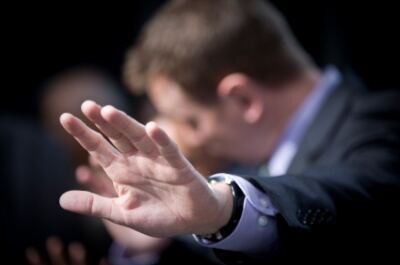
Texel. Texelaars. What to say? Innovative? Yes. Stubborn? For sure. Open for change? To a certain degree, yes. I just realized after spending three days on this beautiful island how difficult it is to come up with a plan to make Texel self-sufficient and to have it be adopted by the locals. By the way, three very enjoyable days I should say: it has to be off my chest. Until now I experienced it as a period in which we have gotten to know each other better, in which we suffer and enjoy the same moments. A good teambuilding excercise towards the finish line one Friday is the least I would call it, if not more.
But back to reality. How the hell do we get these local innovators to adopt innovations that are even outside their scope? I can come up with two things: either make the innovation theirs, or just make the innovation happen: if they are convinced of its utility they will follow and start using it. This last point has also nicely been illustrated by the success of the Texelhopper. Although causing quite some polemic on the island, Texelhopper starts to get adopted and protest and resistance are slowly evanishing. This shows in my eyes that ‘radical innovations’ are also possible on Texel and that resistance to a change of the status quo should be expected, but certainly not feared.
That is why I say: for our final design to make Texel self-sufficient, which we will present on Friday the 16th of January, we should take into consideration the the opinion of the Texelaars, however we should not take these considerations as leading principles for the design. We should not forget that we are here with about 20 students from the TU Delft, one of the leading technological institutes of Europe. On top of that, we have gotten an enormous amount of access to reliable information and data, regarding the subsystems we are studying. My opinion is therefore that we can make a very proper design, in which we can show the Texelaars that we have listened to them, but that in order for a sustainable community on the long term, certain radical changes ‘might’ be needed. It might cause some resistance, maybe even protest. Is that a big deal? For sure not. It shows that we have thought outside the box, the scope of the Texelaar. And if they decide to give the plan a go, I am sure that their box will widen over time and they will fully adopt the changes we are going to present, just as is happening currently with the Texelhopper. So, Texelaars, open for change? 100% yes, the only thing we have to do is open them for this change.
Bullying from the top
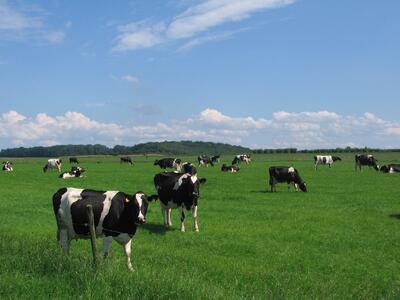
After the initial presentation of our ideas to the Texelaars on Monday, there was a little informal drink with them. Afterwards there was a little loud discussion with one particular Texelaar. A what older man -no names- who was quite skeptical toward some plans and was willing to share his opinion loudly. There were several things I noticed. Some especially since for the large part of the evening I was in a conversation with him. But mainly it made me think of a situation in the place I grew up.
First was the way some people seemed to handle this. I got the idea his comments and reasons were (then and afterwards) waved or even laughed away with the thought that he was just another grumpy old farmer with a conservative opinion. At least it seems like this. I thought this was kind of strange, especially since this evening was about the input from people like him. Even deeply entrenched feelings/opinions are opinions and should be taken into account with socio-technological projects like this.
Second is about his arguments. He is clearly deeply committed with the destination of the land and cares heavily for Texel. He is someone willing to literally fight for his land and this should not be underestimated. Besides the fact that these people usually can transfer their enthusiasm on people in their neighborhood (which is quite large on Texel).
Especially his reaction on flooding the currently fertile land I can relate to from my personal life, since my parents are farmers (cows and cheese making). These lands are for a long time in the hands of the families of the farmers located there and besides loss of income, it probably feels like losing something personal when they unwillingly lose their land. A couple of years something similar happened in the municipality where my parents live. A large area of meadow, in hands of farmers, was appointed by "Natuurbeheer" (nature management) to be formed into a swamp, because it was a swamp before people lived there. There was no other particular reason except a possible very local increase in bio-diversity. Obviously the farmers didn't want to give up their meadows, since this would mean they had to little grassland for their cows. When they didn't comply with the initial price which was offered, thing started to get somewhat more ugly. After that the price went up several times, but these increases were minimal and not nearly enough to have the farmers give up on their farms and income (and passion!). This is when things got a little more ugly, the political game started. These farmers couldn't get anything done with the municipality, when they for example wanted to build an annex.
The situation was followed by other farmers in the neighborhood and they got more and more irritated with the situation. It became a lose-lose situation for everyone, since neither party got anything out of it except frustration. On the one hand it became trying to bully the farmers away, on the other hand it was counteract just as hard for their way of life and how the process was going.
You might guess how it ended, but it is and will not be a swamp. After a few years the whole plan of turning these meadows into swamp was dropped and the municipality never spoke of it again. It may be over for the municipality, but the farmers don't forget easily. And why should they? Just because some people wanted a little swamp for the bio-diversity they were willing to bully and play dirty games which could ruin people's lives. The municipality (unintentionally?) gave a signal to all farmers that they are deemed lesser.
This memory made me reflect on the way we are trying to mean something for a more sustainable Texel. First we came with quite rigorous changes which might really create some friction and most likely leading to complete failure. Now we have (minor) changes, which don't screw up people's lives but might change it slightly in a positive way. And this is something good; not coming from the university thinking we know better and neglecting the people who have lived there for generations. Eventually this will probably be more sustainable, since people actually agree with it. Definitely something I'll take with me for a long time.
By the way; there is a recreation center at the named location, but is way smaller and the procedure getting there was a lot more decent. Also there was little resistance towards the plans.
A diary of the research on Texel - with a hypothetical ending.
Monday
Why don’t these people like wind energy?! It is the Monday of the Island week and we have been travelling to Texel. It is very rainy (can’t we capture some energy from that?!) and windy (6 beaufort, the weather report says) on the island. This seems to be the case every time that I am on Texel, so the stance of the Texelaars against wind energy is rather unfortunate for their sustainable transition plans. This week we will experience Texel in all its aspects and see how we can contribute to its sustainable transition.
Tuesday
Today we met with Maarten Dijker, the mushroom farmer that we already mentioned in the report. It turns out that the way he grows his mushrooms at the moment, does already use waste products and his entire production process has evolved to his needs. Moreover, he knows how to influence his process to increase his output if the demand is high in the summer and he can keep it low in the winter if there are far less tourists on the island. The mushroom output is influenced by the temperature and humidity in the growing chamber and the amount of mushroom baaltjes are currently active. At optimal conditions, one mushroom baaltje can be harvested twice per day! Therefore, Maarten can adopt his output to the demand. Last quarter I followed a course on supply chain management and the entire process was a pretty neat example of Just in Time logistics. I’m pretty sure that my supply chain management teacher would be proud on him. It left him with a large dependency on his supplier of mushroom baaltjes, who is a friend of him in Eindhoven that produces these from waste from the wood industry on an industrial scale. Therefore, 98% of the baaltjes are of a quality that is good enough to grow mushrooms on. Altering the process to grow mushrooms on coffee waste, would largely decrease this percentage and is therefore not interesting for Maarten. There goes our case study… It is time for change!
Wednesday
Guess what, the Texelaars are apparently really innovative and already do a lot of the blue economy principles, they just don’t call it that way. It is called; De Texelse Manier and the main driver is cutting on costs, because it is just more expensive to import something from the overkant. For instance, sharing some old furniture of one of the beach restaurants (waste) with De Verzamelpost. However, these people also apparently have a tendency not to talk to eachother and these exchanges are not that common… we will now try to facilitate these kind of solutions with a new platform that we are not going to call a platform, because that sounds lame according to Caroline. We also found out that Valerie of De Verzamelpost is already doing something similar to our initiative. We could collaborate with her!
Everything beyond this is hypothetical because I finished the column on wednesday. Is this how the week will end?
(Thursday)
Today we finished all our work. Somehow we excluded almost everything from the final chapter that we didn’t write on Texel. At least we can offer a true made in Texel product… My three group mates are wizards with the Adobe Photoshop family, so our final document even looks authentic!
(Friday)
Today we presented our final proposal to the aldermen of Texel. The aldermen were very enthusiastic about Sophie and initially thought she was real. The fact that Sophie was in fact Lucas was a bit of a disappointment, but we made this up by our final presentation. Valerie promised us already that she will seriously look at our proposal. Hopefully we made a true impact!
T E X E L
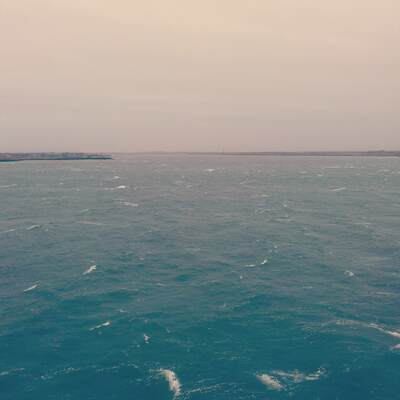
We're finally here! On Texel! I remember when I applied for this course in early September, and read that the course included a field trip of one week. I was so happy to take a course where we were doing something else than listening to lectures in collegezaal F in the civil engineering faculty for eight weeks to then write an exam. I love the idea of working with a project and actually going to the site of the research for some hands-on activities. To be connected with reality and leave the happy bubble at TU Delft for some time, and try our designs in the outside world. When I learned that we where going to Texel I had absolutely no idea what that was. A city? A country? No clue. But I couldn't be more exited.
This week has been eventful in many ways. Not a single moment has been boring, and I've learned a lot about dutch culture. And about Texel. It is a beautiful, stormy and quiet place where people are full with ideas and motivation. Maybe everyone is not willing to change, but that is the case everywhere, right? I hope the we've brought some new ideas or new ways of thinking about sustainability to this island. Because we all need change, even if it sometimes feels uncomfortable.
I will be sad to get on the ferry tomorrow heading back to the mainland. Sad to leave this amazing group of people since we get along so well considering all our different viewpoints and backgrounds. Sad to leave all the sheep and the crazy weather. Texel, you're in my heart forever!
Being in Texel
Being Sustainable during the Sustainable week in Texel???
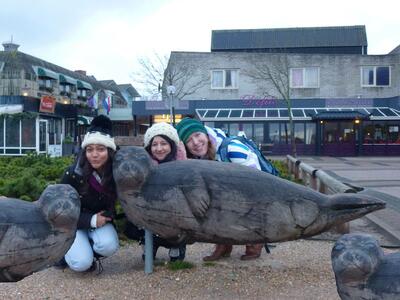
After many weeks of hard work and research about Texel, finally the time of visiting island arrived. I had many expectations about Texel and the Texelaars. I was wondering: Is it going to be too windy? Is it going to be too cold? Is it that quite? How are the Texelaars?
So, the day arrived and after a long trip from Delft, finally we arrived. It was windy and cold and we picked up our bikes. The idea of using bikes during the whole week was intriguing and fascinating for me, because I had heard how hard the wind was in Texel and its beautiful views. We met our startling hosts, left our baggage in our accommodation and the adventure started. However, the climate was so bad, that “we were forced to use cars”. One morning, few people decided to use the bikes instead of the car, and breathing fresh air was, indeed, refreshing. It was really nice, windy of course, but refreshing with nice views of the landscape of the island. We also met some Texelaars, and after visiting the villages, we realized that Texelaars are really innovative people and we learnt many things from them. In fact, we realize that they live in a really sustainable way.
However, in spite of all the positive aspects of our visit in Texel, I realized that, within our week in Texel, we were no sustainable actors. Using cars, using plastic plates, eating meat, and mixing the garbage. I realized that we are aware of sustainable technologies and strategies; however, are we aware of our personal behavior towards sustainability? Are we sustainable actors? The answer is no. I confirmed again that modern human beings are unsustainable by definition.
Value Sensitive Design in practice
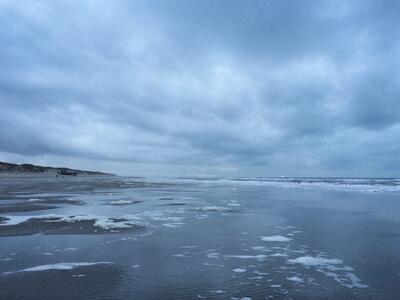
This entire week has been a pressure cooker for knowledge and ideas. For me one of the most valuable moments already took place on the first evening at De Verzamelpost. We were joined by a group of Texelaars and pitched our ideas for the island. The group consisted of people from different layers of society. There were high school students looking for inspiration for their high school thesis, entrepreneurs, both from the new and the older generation, people who were generally interested, etc. I was not one of the presenters, so I had the opportunity to examine the reaction we got from the locals. What I noticed during the presentation was that the real tangible ideas got a lot more response from the locals than the more vague ideas. This made me realize that when the goal of your presentation is to receive input from the audience, presenting (maybe somewhat controversial) plans will generate the most feedback. We have learned in this course that in value sensitive design it is really important to incorporate the interests and concerns of the actors involved. Locals did express their concerns and I think this was a really valuable lesson for our research as well as the entire course. This week provides us with a hands on experience of the theory.
However, we were also confronted with the difficulties of using value sensitive design. In the reactions we received two fractions were clearly visible. Both are really proud of the island, but the difference is that both fractions have a different vision on how to express this proudness. The first fraction is willing to improve the island in whatever way to make it even more attracting for tourists and overkanters (people from the mainland). On the other side are people who are really happy with the island as it is and are concerned that change will not necessarily lead to an improvement. Our challenge is that the result of our research should be able to build a bridge between these two fractions, but is this even possible? At the moment of writing this column (Wednesday evening) we’re still working on tweaking the final design. The symposium on Friday will give us an indication to what extend we have succeeded. We chose to first pitch the more controversial ideas, and later communicate the ideas that, we think, will be less provoking.
To sum up, I think I have learned that value sensitive design is very important to gain support for a design. At the same time it is a lot more easy to write that all values and interests should be taken into account, than to actually to do so. The challenge is bigger than I had anticipated, but it is a challenge that I find very interesting.
Reflections upon Texel stay
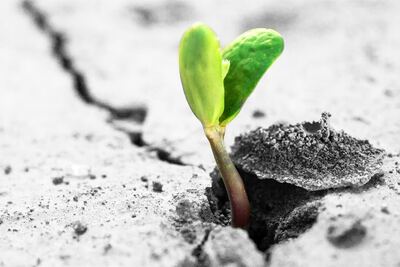
Being in Texel has been a very nice experience, during which we had the opportunity not only to learn from our fellow students and professors, but also from the Texel people. Personally, I was impressed by the meetings we had with the local people from the island. People of different ages came to see the presentations of our ideas for the sustainable transition of Texel. In the first meeting, most of them were actually happy and convinced by our still fragmented and non-mature “story”. But one of them (“Angry Werner”) did not seem to be very happy about the plan, and he was (as I understood from one of my Dutch group mate's translation) reluctant in being positive even for hour final proposal. What I found interesting in this is that this man came not only once, but even twice to see our work and progresses. I assume he is very passionate about his island in which I assume he lives from many years now, but is that all?
We saw that some students from the group “Food & More” came to see its cattle farming and he seems very busy with his job. So why bother coming to listen to people talking about topics on sustainability? I am not referring only to Werner, but to the whole group of people that came to see the presentation. What I think is that all these people are interested in their island’s future, but they are especially interested in sustainability, as also most of them described themselves in front of the whole group. Even a “pessimistic” person such as Werner must have sensitivity on sustainable topics; otherwise he would not be there.
I eventually found myself thinking about all the people that knew about our presentations but did not come for reasons not related to their business, but for not believing or even knowing anything about sustainability. We know that the word “sustainability” is sometimes misunderstood, or even considered with skepticism.
My conclusions from this trip is that what is sustainability should be taught from the schools, just like math or any other subject. Because we need a change and to make it happen we need to start from our culture.
If we grow sensitivity towards sustainability starting from our children, a hypothetical future meeting at De Verzamel Post will show an incredible increasing on the number of participants.
Texel as host
It is always nice to see in reality something you have read about or researched. We read a lot about the Texell and spoke to many “texelaars” or people somehow related to the island, but without seeing it yourself, it is, sometimes, hard to verify certain facts .Therefore, before coming to an island I was wondering if what I am going to see, resembles the picture of Texel Island I had in my mind. To be honest, I was quite skeptical at the beginning, because I could not imagine that such a small island can have such a big ego and that so many things are going on there. I was wrong.
The biggest surprise for me from the very first day was the enthusiasm of local people. The day of our first presentation and our first day on the island was not friendly in terms of weather conditions. On the way to the VerzamelPost, we were almost blown away by a strong wind. (By the way, it was my first experience of cycling under an angle). Thus, in the evening, while I was listening to the wind and rain outside, I thought that no one will pay a visit in order to hear ideas about sustainable living from small group of students. I was wrong again. Moreover, the people that came for our presentations were really enthusiastic and wanted to find out what we can propose to make their island and lives better. This is a milestone when everything started to become real.
Another fact that surprised me on the island, that I would like to mention in this last column, is cheese farm Wezenspyk. This is small cheese farmwe paid visit to. On the wall of the factory in a simple frame hangs an award for the best sheep cheese in the world dated 2014. Small island, small factory, that uses only local products, manages to make best sheep cheese in the world. Amazing.
To sum up, after this long week came to an end, I feel tired and satisfied. Satisfied not because our idea was accepted very good, but because of the fact, that places were people really care about their environment, exist.
Meeting the meat on Texel
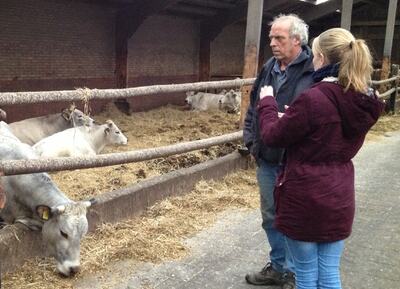
What a week, What an amount of unique experiences! Sitting in the train I think back at all the things we have done this week and I think I can say that I had a real Texel experience. I finally had my real Texel bear, survived biking through the storm, have seen the lighthouse and the beaches at the tip of the island. But the thing that I think I always will remember is the meat excursion Borris Caroline and I did.
Even though I'm a meat eater, I never have been so close to the way an animal is processed into meat on my plate . All though the farmer first link in the chain of meat, we started our excursion at the slaughter house. I had to take a deep breath to not get instantly nauseous of the things I saw. The smell in the slaughterhouse was really intense and blood was everywhere, even on the clothes of the Slaughter Cor Boschma. He gave us a tour through the building and told us how the animals are treated. It was really beautiful to see how he talked with so much respect for the animals. On to the next link in the chain, the butcher shop. But before I could step into the car I had wipe off the pieces of meat and blood that were stuck under my shoes.
At the butcher the lamb, that we saw earlier hanging on a hook at the slaughterhouse was living in the shelves waiting for someone who would want to buy it. For real Texel experience we bought a piece of lamb ham. With our hungry stomachs we tasted the meat. Eating this little piece of meat was really intense. I struggled to swallow it. It tasted exactly the smell of the slaughterhouse. I never expected that I would be so shocked by the taste of a little piece of meat. I realized, this is real live, this is the real business. However my meal was less tasty that evening.
To finish the whole experience we went to the place where the animal came from. The farm Werner Dros. The angry man earlier this week, turned out to be a concerned farmer who is very involved with the island. He talks full of respect for his animals. With beautiful statements like, “you never should walk like an elephant through a porcelain cabinet” and “As a farmer, you have to keep your pants up yourself” he explained a lot to us about the meat cycle on Texel.
A few weeks ago, I wrote a column about meat and its ecological footprint. To eat meat in a sustainable way, the amount we eat really needs to decrease. I think this meat excursion will help me to achieve this goal. It was wonderful to see how the whole meat circle on Texel treated the animals with such a respect, but it is good to know that it is not always done like this. And in order to get this kind of meat you have to pay for it. I think I will leave the kilos stunner next time and maybe go to the butcher for a better piece of meat. Where will the piece of meat from the butcher in Delft actually come?
A Sustainable Culture
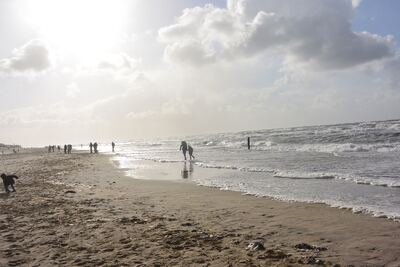
A sustainable culture
As my previous column post implies, technological development can lead to a more sustainable way of living. Sustainability can imply, being self-sufficient. And being self-sufficient can lead to equal distribution of energy, food and money. The island of Texel has set a goal to be self-sufficient by 2020. We, 25 TU Delft students, where asked to set up a plan for Texel to help them reach this goal. Before coming to Texel our plans where primarily focused on these technological developments and how to incorporate them into the daily lives of the Texeler. We knew that for the Texeler to actually become self-sufficient a lot needs to change. Not only on a technological level, but also on a social level. It requires a change in mindset. A transformation of a deeply rooted culture. A culture of consumerism and abundance. In order to know what to change we needed to go to the root of this culture. Research on the culture of Texel provided us with some ideas of how to address this.
When we arrived in Texel we set ourselves the task to interview the locals, to test whether our findings were true. We were surprised by the willingness of the locals to take the time to answer our questions. This really helped us to do profound research in a short period.
Our first question was, how happy are you currently with your life, on a scale of 1 to 10? An astonishing average rate of 8,4 was the result of this question. This rate seemed to be strongly linked with the social cohesion and the amount of nature on the island. Both things which are relatively low in our larger cities i.e. Amsterdam and Rotterdam.
Texel wants to be an example to other countries as a sustainable island by 2020. But, to me Texel is already an example. After having seen and experienced the way the Texelers live together I think the “mainlanders” can really learn from them on a social level. Now, we have shared our technical knowledge with the Texeler in order to help them become more sustainable. But maybe we as “mainlanders” are more in need of their social knowledge to become a culture in which sustainability lies at the core of our social behavior.
Integrating sustainable concepts with many actors
The biggest difficulty in making the world sustainable is teamwork, communication, integration.
For example biodegradable plastic packaging, this is already used for many products. It is a great idea, not harmful for the environment and even economically feasible. Nevertheless there is a huge problem with this. To start, many people do not recognize the difference between biodegradable plastic and normal plastic, they put it in the garbage bin with all the normal plastic, what happens then is that the ecological plastic is burned anyway. If people do put the degradable plastic in the bin with green garbage, the plastic will be burned also, because it is not degrading as quick as plants and peels so it will be filtered out and burned.
This is a good example of a sustainable idea that is not working out because not all actors are pointing the same direction. In the described chain, the waste processers are clearly not aware or not willing to pay attention to the trend of biodegradable packaging.
Technologies for living sustainable are at hand, the biggest challenge might be integrating it in the world and the most important factor hereby is communication and agreement between different actors. After the TiSD week on Texel one thing really surprised me happily. We started on Monday with eight groups consisting of three members, having eight completely different, sometimes conflicting ideas for a sustainable Texel. Still we managed in five days to integrate all those ideas into one coherent concept. I think this success is the result of a few factors. First direct leadership of one person, not involving too much in the concept itself but more coordinating the process very strictly. Providing structure during the sessions, when we had to work on what part, in which groups, providing advice in some later stages to not discuss longer than ten minutes. In my opinion the first stage in integrating the eight plans was really well organized, it was a great idea to take one person out of each group and make three different groups out of those, one person representing every subdomain. This way there developed within half an hour three interpretations of how the eight plans could work together. It is also interesting to see that the final design resembles a lot with one of the first proposals on Monday. Besides the communication being very well organized, I have to say that an important part of the success is also thanks to the devotion of all the participants. It also helps a lot that we were together for five days, constantly talking about the concept and about other topics, you really get to know each other very well and it helps leveling and talking on the same ‘wavelength’.
For integrating sustainable concepts in chains with many actors it is important to have devoted representatives from every subdomain, knowing each other’s personalities, desires and having a certain relationship. There should be one devoted leader coordinating the process and not influencing the concept itself.
Transition: Texelaars & Overkanters
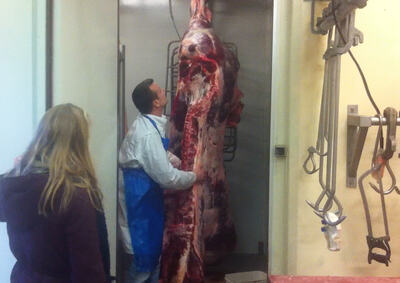
The week on Texel was truly a unique experience. The diverse research methods and interaction with local people gave the plans a completely new boost. I learned some good lessons about group dynamics and the role of the engineer.
The social dynamics in the whole group changed in the first few days from a plan-focused perspective to a more people-focused perspective. Especially the idea of our group, the saline overflow-area, changed completely during the week. The first evening with local people initiated the change towards a people-focused design when the Texelaars expressed engagement and feelings about what we would like to do with their land. The reactions of the Texelaars also differed from each other, which made me realise that we were acting in an intricate political field. It became also very clear that we, TUDelft students, had become actors too.
From then on, plans not only had to be formulated more cautiously, a change towards more social thinking was needed as well. The rigid technical plans had to become more socially focused and flexible. It was an interesting process to see how the various sub systems interacted with each other and how this led to a more (politically) acceptable plan.
I also learned a lot about the locals. It appeared that they were already doing things in a rather sustainable way, although they were not always advertising with it. The meat industry on the island is a clear example of this. The slaughterer expressed this by explaining how they try to close cycles of production and consumption on the island. He clearly said that they also say ‘no’ to some orders, such as fillet of beef, because the amount of slaughtered animals simply does not provide enough. They refuse to import form the mainland to fulfil the need, because there is plenty of other meat of other parts of the cow still available. The Texelaars were all very happy to show us how they ran their businesses sustainably and this enthusiasm was very contagious.
The interesting question of the proposal was how this sustainable thinking could be taken up by the community. How can the drive of individual innovators be spread to the whole island? The connection with existing initiatives was a key point of the plan. The pride of the innovators and initiators can be used to encourage other people to innovate as well. Another part of the plan was motivating people to connect to and learn from each other. Now, Texel is still many islands on one island, and this should be overcome to get a more rapid change.
I hope that the plan we came up with will actually lead to more innovation and eventually a sustainable transition. I also hope that the connection we tried to make with the Texel community actually works, because that would also mean that we, engineers, learned how to design for a social context.
Beyond Texel
After this amazing week at Texel I’m not only impressed by the work we’ve been able to do. Though it was my second visit, I was surprised to find out what a great community the island is.
After this amazing week at Texel I’m not only impressed by the work we’ve been able to do. Though it was my second visit, I was surprised to find out what a great community the island is.
As a fresh inhabitant of Amsterdam, I am a little scared by the anonymity of the life here, Texel was an inspiring opposite. All Tesselaars I met were really involved with the island, the shared ownership of the ferry is a great example of that. They were proud of their island and used innovative methods to get all the best out of it.
The best thing about it, according to me, was the passion and devotion they worked with. During our visits to the water treatment facility, the zelfpluktuin and the TESO all of our hosts were proud to be contributing to the life on Texel and therefore seemed more aware of the consequences of their work. Though the well-known 2020 goal suspects otherwise, sustainability wasn’t something implied from a higher position, but a way of life because “it feels like the right thing to do”. I think that’s a great motivator.
Back at “de overkant” I am thinking about the example Texel could be for a city like Amsterdam. There is far less personal involvement, and most people see tourists as a burden instead of a welcome guest providing income. But at the same time there is a lot of pride as well, probably combined with great, sustainable, ideas to improve the city. I’m a little jealous of the Tesselaars, since I have no Idea about those ideas. I never speak to the aldermen or the owner of the most important public transport and wouldn’t even recognize them if they were sitting next to me at the hairdresser. But if I’d meet them, I’d definitely tell them to visit Texel for inspiration!
Column Texel
The final column about the week on the island
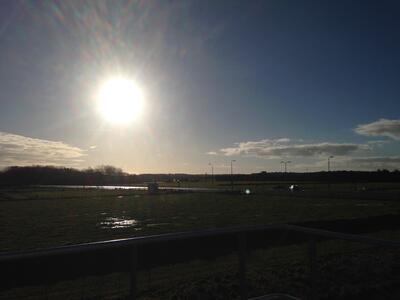
What a week!
The stay on the island has really changed my perception of Texel and the way Tesselaars think and act. Besides the conversations with the Tesselaars on Monday evening, the visit at the water treatment plant was the real eye-opener for me. I came to the Island with the idea to improve the sub-system with all kinds of technical innovations. But after seeing the treatment plant I had no Idea on how we could improve this system. How can we as TU Delft contribute to a more sustainable Texel with technical innovations if they are already doing so well? For me the answer was simple: we just can’t do that.
This was to be discussed on Tuesday evening were I totally disagreed on the way we wanted to continue with the group work, but I didn’t have the solution either… However, I was already thinking about this, weeks before we went to the island. In my 3th column I asked myself the following:
“This again made me wonder to which extend a feasible design solution is going to be a physical entity like the designs I make in my architectural projects. A crucial part of the physical design solution is the process it takes to realise it, so this should also be part of the research we do and the final design we present. This could be everything from business models to governmental policies and so on”.
I think this Tuesday evening group discussion was very fruitful and guided us towards the right solution in the end. As I mentioned in the last line the design could also be a business model; and I think we’re pretty close to that. Instead of a socio-technical system, the final design is more like a socio-economical business plan for the Island.
I am truly astonished about the amount of work we all have done during the week, especially since so much changed as a result of the things we learned on the island itself. I was even more astonished by the reaction we got from the Tesselaars after our presentation. So wonderful to see that they actually agree on our proposal and really want to continue working on it. I have done many projects together in a group, but to be honest; I have never felt so proud about the final result as I do this time!
I will definitely return to the island somewhere in the near future, but I think that’s going to be during summer, because I would also love to enjoy the island with a nice weather. The island now looked like an oasis of tranquillity and I’m curious to see how all these tourists change the island during the holiday seasons.
I’d like to thank everybody for the amazing time and I hope to see most of you soon when we’ll be having a well-deserved drink.
- Jesper
You get what you pay for
Lizet columns #7
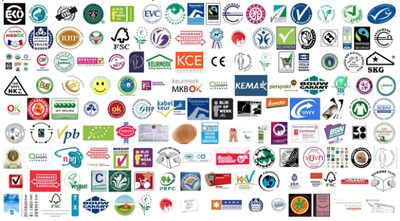
Last Christmas we played a game with the family: everyone had to bring small presents which where randomly divided to the new owner using a dice game. Due to the low budget and the lack of wish lists, people bought the silliest things (varying from cheap picture frames to gift packs of men deodorant). The level of (useless) ‘consumoring’ was high. The presents you receive were either useless because you just don’t need them (like men deodorant for my grandmother) or useful only for a short time due to the low quality of the products.
Don’t misunderstand me: as most girls I like shopping new shoes, bags and other stuff. But there is this fine Dutch expression that says ‘goedkoop is duurkoop’ [you get what you pay for] that I am using increasingly more over the past years. Shops full of cheap products (like Primark, Xenos, Action and so on) seduce the customer to buy things you don’t really need or will break in few weeks (like the 10 euro shoes of the Primark that last a month at max). These cheap products start to irritate me and I notice that I nowadays buy fewer products for the same amount of money. A nice side effect is that I take better care of these expensive products, since replacing them is costly. I’m aware that the expression is not always right (the bananas of the Lidl are not lesser than the ones from Albert Heijn) and besides, all the different eco marks are more confusing than helpful. Apparently there is not 1 truth. For now I just follow my 'goedkoop is duurkoop' slogan till I come across a better one.
Bibliography
Duurzaam Ondernemen. (2014, 12 5). Certification en keurmerken - Niet als criterium, wel als uitganspunts. Retrieved 1 4, 2015 from http://www.duurzaam-ondernemen.nl/certificaten-en-keurmerken-niet-als-criterium-wel-als-uitgangspunt/
What did I learn after a week in Texel?
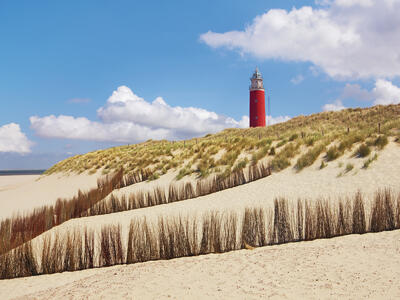
During my master’s courses, I have been studying how to analyze and take into consideration different actors’ perspectives when facing complex situations. From such perspective, getting to know who the actors are and understanding their interests, resources, objectives and values are crucial steps into a successful problem solving, especially when decisions have to be made. On the other hand, I have been learning tools to improve the quality of my findings when performing exploratory research in order to be able to withdraw reliable and significant conclusions. After months of, mostly, a theoretical approach in my learning experience, it was truly inquiring and amazing for me to be able to use the gained skills and knowledge in an unexpected and practical way and, even more curious, was to experience it outside my regular classes through my extra course of Engineering for Sustainable Development.
Being able to have contact with a complex situation with real people sharing their opinions and interests about our designs while stating their support, opposition or even indifference has been the most valuable learning experience I have had as a policy analyst so far. From the beginning of this course, it was a challenge to focus on the sub-system of health, happiness and well-being as is framed in abstract concepts difficult to link to the technological developments at first sight. However, it was necessary to look beyond in order to establish a feasible connection between sustainability and happiness with a practical use for the community, which is how we ended up proposing the Happy Texel Index as a driver for the entire system.
Nevertheless, after we arrived to Texel and had contact with its people, a new challenge arose. At the beginning, it was shocking for me the fact that everybody seemed to like the idea of measuring happiness in the island and linking sustainability proposals to generate the needed well-being in the population but, at the same time, no one seemed to compromise to make it happen, no applicability was related to such a measure. The main point of discussion was related to the fact that people is already satisfied with the current living of the island, then: why to make a change? Why to make them feel uncomfortable and less happy by pointing out possible weaknesses as they not being sustainable enough?
Connecting an idea to the final users is a challenge every designer faces, as they are the ones that will not only initiate the implementation but to request and encourage its constant usage. In Texel, I could experience the inventive spirit an island with limited resources and sources for income can instill in its population, I could witness the well-being experienced by the Texelaars, and I could face their sense of community and social cohesion. Moreover, by trying to “sell” our idea to inspire a switch on people’s mindset and values, I learnt from their creativity, inventive spirit, vision of life and stubbornness, and it seems that, in the end, they help me to switch my professional values in return. Finally, the final learning lesson gathered there is to be open to new ways of thinking and to take advantage of people strengths and expectations to engage them to new perspectives of the world. It is impossible to try to change the mindset of a community in five days, but at least you can sow a seed of innovation by challenging their ways and letting them challenge you in return.
Texel's Identity

Texelaars and their attachment with the island.
How important is place?
How did this affect the proposal for a sustainable Texel?
Texelaars and their attachment with the island.
How important is place?
How did this affect the proposal for a sustainable Texel?
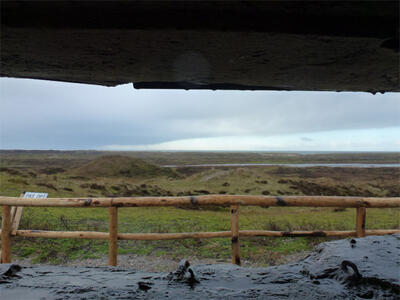
Column Texel - Texel's Identity
The most remarkable fact that I learned this week from the Texelaars is their attachment with Texel. Monday evening during the Sustainability Café, our provoking and top-down sustainable proposals for Texel resulted in an unbalance between the Delftse designers and the Texelaars, followed by intense discussions. Texelaars (or at least a large group of Texelaars) feel very attached to their island. I believe that this feeling is encouraged by the physical boundaries of the island. Characteristics that relate to the place (such as a language/dialect or common habits) could strengthen their common commitment. For example, a person from a municipality of Zuid-Holland, will feel less attached to the place because they have less unique characteristics that distinguishing sufficiently from another municipality of Zuid-Holland to encourage the common commitment within the municipality. However, I think that Frisians, who have a common language, have higher attachment with their Provence, which is comparable with the few weeks every two years when the Dutch national soccer team plays at the FIFA/UEFA Championship. The characteristics that relate to the place is what I call the identity of the place.
In the 20th century, the possibility to travel all over the world became available for everybody. The introduction of Internet resulted in the fact that it is easy to communicate with people from everywhere, at any moment. The world became smaller and we can travel further in less time. These possibilities have many advantages such as learning from different cultures. However, I believe this caused (among others) the loss of connection with places. Maybe the same happens with time since we move towards a 24-hour economy. People migrate from and to all places over the world and bring their culture to the place where they live. This results in a mixture of different cultures at the same place. If there is an unbalance between the native culture and the foreign cultures: the identity of the place will get lost. This implies that the identity of a certain place should not change but that is not the case. Identities of places change over time but what currently is happening is the creation of a kind of global identity for every place on earth (a bit exaggerated of course). I think that a global identity does not exist (or at least where not ready for it yet). The place including the characteristics of language, habits, communication, seasonal changes and weather, is deeply rooted in our lives and therefore cannot be ignored.
Valerie (De Verzamelpost) is an example of an 'overkanter' that is still not seen as a genuine Texelaar, despite of the fact that she lives there for almost 20 years. She has proposed various plans over the past years but not everything is supported by the Texelaars. The fact that Texelaars do not like plans from the 'overkant' but do like the plans if they came up with it, makes now kind of sense to me. The Texelaar scores very high on the element 'Place' in the YUTPA framework (which is represented by ' Situated agency', 'Emotional space', 'Body sense' and 'Environmental interaction'). They are afraid that their identity will change due to influences of 'overkanters' and tourists. They are willing to change (the identity of) Texel, but in such a way that they changed the identity and not someone else. Therefore, I think that the shift from a top-down approach towards a bottom-up approach we had during the Texel week was the only possibility to enable a transition towards a sustainable Texel.
One week on Texel
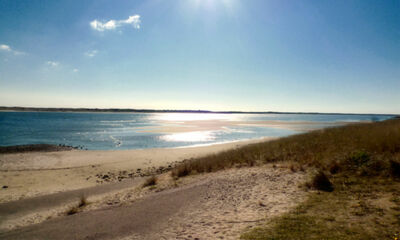
I can imagine what the Texelaars thought when they heard about a bunch of students from Delft University of Technology would come to Texel, and think of different ways that the island could become more sustainable. They assumed to be given sheets filled with data and calculations, showing where new technologies would be implemented, and how much kWh this would provide for Texel, showing disregard to all culture and tradition on Texel.
Surprised must they have been, when they saw our presentation on the 16th of January. Where they expected windmills, they got a Happy Texel Index. Where they expected PV-panels, they got sightseeing routes. As stated in our presentation and booklet, Texel has a very fertile ground. There are many small initiatives related to sustainability. Texel is already pretty sustainable. It just doesn't really promotes itself as such.
This especially became clear to me when I started hearing about many other initiatives related to sustainability, which we hadn't immediately been able to find through the internet. Researching an island without visiting it beforehand clearly had its downsides. Not only does this prevent you from finding, sometimes crucial, information, but it also forces you to make assumptions.
This one week on Texel was extremely valuable to me. Not only due to the fact that our scenery changed from office spaces at the TPM faculty to the island of Texel, but mostly because we got into contact with people from Texel. Our subsystem (Health, Happiness and Well Being) was focussed on connecting our ideas to people from Texel, and therefore contact with the Texelaars as of great importance. It is in this week that some of our focal points in our subsystem design shifted towards what eventually became the Happy Texel Index. To later read this in last Friday's (16th of January) newspaper was priceless. Seeing the positive reaction of many different types of Texelaars made up for all the work we had put in during this week and the many weeks before.
Where the Texelaars expected us to present technically innovating ideas, we came up with an idea that made Texel more connected than ever. Socially and technically. Jutter 2030 was born, and I hope it will live for many years!
Learnings from the love story of Lucas and Sophie
This week’s task: find solutions to the following questions:
How to bring a change? What change really matters? Whom to keep happy, the old or the young? How to prove to people that you are the one with a great idea that can make Texel a better place? How to retain the identity? (Well the list is long and so are the discussions on them). But i guess the love story of Lucas and Sophie says it all. Sophie, a regular local who is always overwhelmed by the things outsiders have or do but at the same time a local proud of her land, Lucas a regular engineer-outsider with big plans of innovation to Texel, surprised by the resources on Sophie’s little home island. Of course, since it is a love story, they get together and live happily ever after.
While this story is worth an “awwww”, I started a conversation with my (relatively) smarter side: I said ‘but hey! Don’t we all have some Lucas’ and some Sophies everywhere? And, sometimes they are none other than our own selves! In this workshop, I realised that while it is important to learn what the others are developing and how they are busy with their huge plans, it is much more important to realise what resources we have : in our home, and in our own neighbourhood, and how we can implement these big ideas back there. In other words, while it is good to know what the world is at, one should not forget what is our identity, what makes us, ‘us’ while adapting the ‘change’. Does not mean the change should not happen, it will happen inevitably and eventually. But its course of direction is something that we can choose.
What’s more, Lucas or the “technological” one did not go to Sophie’s land and tell her to change her way of living because it is unsustainable, and completely adopt the way his people are living. He knows this will not bring happiness to the people, nor will it be in balance to the ecology- the aspect most of us miss when we are on our path to monetary success. However, he began to understand her culture and started to implement his technology in sync to her culture. This is probable the most important aspect we as engineers should remember- each culture has a different approach. The idea is not to wipe off their characteristic being but rather, to embrace them and work towards progress together. We have learned from our past more than once, that if the society does not accept science or the other way around, all the knowledge will only decay while mumbling preachings.
As a final note, just as in the case of Sophie and Lucas, it is the love that drives us to change our way of thinking. When we understand that the people we love are a part of the larger ecological and social system, we automatically become more sensitive to the system and want to be the better part of it, be an integral part of it. It doesn’t require complex solutions, because simple solutions are most tangible and effective. Neither does it require complex engineering, but the tools at hand, but the correct knowledge and approach. That is why the wise Greek philosophers say, ‘Simplest of things are most difficult to achieve’.
Ofcourse this is a fairy-tale, but fairy tales are based on our fantasies of a better future. Like mentioned before, change will happen inevitable and eventually, but the course of change is something that we can control.
Our answers
When we came to Texel, I had no idea what the week would bring. A lot of work went into our proposals, but even more was waiting for us. But more so, a lot of interesting people were waiting for us. It started on Monday evening after a day of hard work and bad weather. We met the real 'Texelaars' to show them our ideas. Most ideas were met by a very positive public. One idea however, was not received so well. One farmer was furious about the idea of flooding a part of the arable land on Texel to make a testing ground for salt water farming. The young people in the room said that they thought thinking outside the box was very important, so this should not be shot down so easily. They also said it might keep young people on the island. The old farmer responded that he was inventive enough without creating new environments, that farming on Texel was hard enough. This kind of set the tone for the next days. All people we spoke about our ideas showed us that they had already done so much inventive things that the world does not know about. There is a very stimulating environment on Texel. But everytime we talked to a 'Texelaar' long enough, something else became clear. Everyone started with an idea and at some point only talked about the problems with implementing this idea, or the other social problems Texel faces, like the young people not returning to the island after their studies. The technical solutions we put forward were answers to questions the Texelaars never asked. Instead, they needed answers of a more social nature. This shows how important it is to talk to the people you are trying to help. Our whole Texel week we worked on converting our solutions to an answer to the actual questions of the Texelaar. Something we could never have done without talking to the Texelaars themselves.
Texel Week
After developing the entire plan of action in each of our sub – systems we headed to Texel for five days (Mon – Fri). We were told that afternoon that a few Texelaars would be coming to see what we had planned. The Texelaars who showed up were a couple of students, a farmer, a couple of people from the press, a musician and a few more. After a short presentation which comprised of our work and included ideas like movable dyke and automated unmanned vehicles. There was criticism from a few of the individuals, following this we were fully aware that our existing plans were a little over the top. The average Texelaar doesn’t want his island to be changed drastically and affected.
The following day (Tuesday) we planned that we would visit a few of the Texelaars. Each sub – system was to go and discuss with locals about the problems they were facing and what could be done to improve the present scenario. We had gone to speak with the owners of ‘Zelfpluktuin’. They had showed us the organic practices they follow; using coconut fibres in the soil. They explained that in the summers they open the farm where tourists and Texelaars come and eat the healthy handpicked fruits. They had their own drip irrigation mechanism which saves a lot of water. However, they had no interest in expanding their business in either Texel or abroad.
After the interviews, that same evening we sat down to discuss we each other about the Texelaars and their problems. The consensus was that Texelaars are individualistic, innovative and very concerned people about their island. This was the turning point of our proposal. We had to shift from a highly technical viewpoint into a more realistic viewpoint, to sell the plan to the Texelaars. Keeping these few points in mind we planned out an approach which was neither too imposing nor too subtle.
The following day we divided ourselves into 3 large groups, one taking care of the presentation, another taking care of the short movie and another taking care of the report. I was in the group taking care of the report. There was no shortage of ideas; ranging from an innovation platform, to a knowledge route, to a ‘necklace road’ where the harbour was the ‘jewel’. There were too many, and combining them into one unified idea was the difficult part. However, with one more day remaining we had to speed things up and get to a plan. Working from 8am to 2am the next day was something I’ve never done, and it was a good experience working with people in such a large group so it didn’t seem so daunting.
The ‘D’ day had come (Friday). We were scrambling with last minute editing, additions and improvisations on the report. We completed just in time, the presentation was at 2pm and I was surprised to see the number of people who had come. Almost 30 people, including the Alderman of Texel. The people who had showed up on Monday were present as well. After the presentation and the movie we were waiting for the feedback. Since the language was Dutch I could not understand it, though a friend was kind enough to translate it for me. From what I was told it was great work done by us and it had interesting prospects. They were surprised at how we switched over into a different style from the presentation that was given on Monday. However, they were afraid that this plan would just remain a plan and it would not be set in action. A small contract was made up which stated that we the students will visit (and help improve) Texel once at least in the coming year if called upon by Texel.
One the way back I was a little saddened that our short trip had come to an end. Since my background is Mechanical Engineering I had never worked with a group so big and I had not worked on a project of this scale. It was interesting to work with people from different backgrounds and cultures. I believe that experience opened up a different viewpoint in my life. It will definitely be etched in my memory forever.


 Cheyenne Schuit
Cheyenne Schuit

 Stefan H
Stefan H

 Thalia
Thalia

 Derek van den Berg
Derek van den Berg

 Dennis
Dennis

 Thijs Schaap
Thijs Schaap
 Klara Bergman
Klara Bergman

 Tatiana Armijos Moya
Tatiana Armijos Moya

 Stefan Olsthoorn
Stefan Olsthoorn

 Antonio D'Aquilio
Antonio D'Aquilio

 Irina
Irina
 Iris
Iris


 Yannick
Yannick
 Borris
Borris

 Rosanne
Rosanne
 Jesper Goorden
Jesper Goorden

 Elia Galiouna
Elia Galiouna
 Lizet
Lizet

 María José Galeano Galván
María José Galeano Galván

 Pieter van Hall
Pieter van Hall

 Pinal Desai,
Pinal Desai,
 Nora
Nora
 Syed Aaquib Hazari
Syed Aaquib Hazari